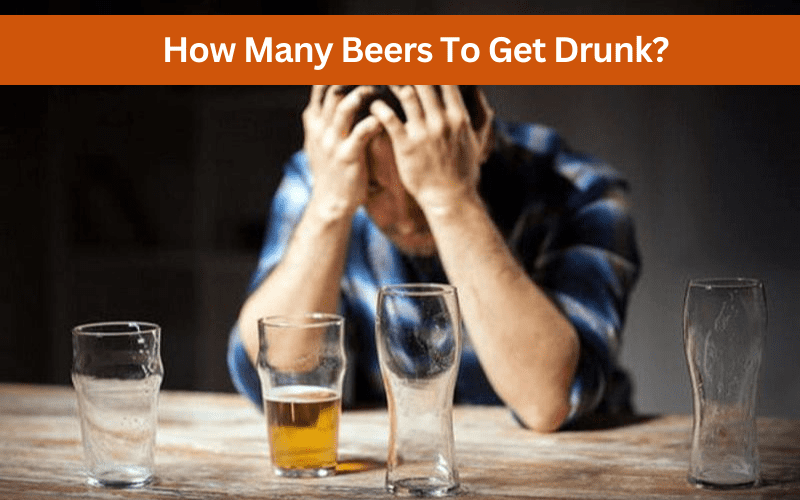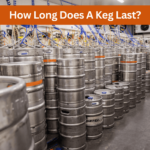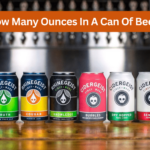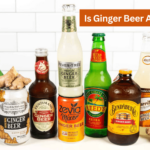It’s a question that many of us have asked ourselves at some point in our lives: how many beers to get drunk? Maybe you’re going out with friends, celebrating a special occasion, or just trying to unwind after a long day. Whatever the reason, the allure of alcohol can be strong, but it’s important to know your limits to stay safe. As someone who has experienced the consequences of overindulging, I know firsthand the importance of understanding how many beers it takes to get drunk. In this article, we’ll explore the science behind alcohol consumption and the factors that affect how many beers to get drunk. So, grab a cold one (just one for now!) and let’s dive in.
What Does Being Drunk Mean?
Being drunk is a state of intoxication that occurs when you consume alcohol to the point where it impairs your physical and mental abilities. The level of intoxication varies depending on the amount of alcohol consumed, your body weight and composition, your gender, how fast you drink, and many other factors. When you’re drunk, your ability to make rational decisions and control your movements is impaired, and you may experience symptoms such as slurred speech, impaired judgment, and loss of coordination.
Can You Get Drunk Off Beer?
Yes, it is possible to get drunk off beer. The amount of beer it takes to get drunk varies depending on several factors, including the amount of alcohol in the beer, the rate at which you drink, and your body weight and composition.
Factors that Make You Drunk
There are many factors that can impact how quickly you become drunk, including age, gender, body weight, drinking experience, and metabolism.
Age
As you age, your body’s ability to process alcohol decreases. This means that older adults generally become intoxicated more quickly than younger adults, even if they consume the same amount of alcohol.
Gender
Women tend to become intoxicated more quickly than men, even if they consume the same amount of alcohol. This is because women have a lower percentage of body water than men, which means that alcohol becomes more concentrated in their blood.
Body weight
The more you weigh, the more water and body mass you have to dilute the alcohol. This means that larger individuals generally become intoxicated more slowly than smaller individuals, even if they consume the same amount of alcohol.
Drinking experience
Individuals who have a lot of experience with alcohol tend to develop a higher tolerance for its effects. This means that they can consume more alcohol before becoming intoxicated than individuals who have less experience with alcohol.
Metabolism
Your body’s metabolism plays a significant role in how quickly you become intoxicated. Individuals with faster metabolisms tend to process alcohol more quickly than individuals with slower metabolisms, which means that they can consume more alcohol before becoming intoxicated.
It’s important to remember that these factors interact with each other in complex ways, and everyone’s body is different. While some people may be able to consume a large amount of alcohol without becoming intoxicated, others may become intoxicated much more quickly.
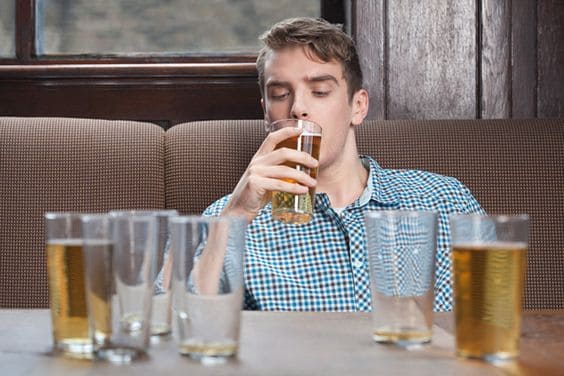
What Are the Stages of Drunkenness?
There are generally four stages of drunkenness:
- Euphoria: feelings of happiness, relaxation, and decreased inhibitions.
- Excitement: increased talkativeness and impaired judgment.
- Confusion: decreased reaction time and loss of coordination.
- Stupor: severe impairment of motor function and loss of consciousness.
Understanding Blood Alcohol Content (BAC)
So, what is BAC? Blood Alcohol Content (BAC) is a measure of the amount of alcohol in a person’s bloodstream. It is typically expressed as a percentage, and it reflects the amount of alcohol in a person’s system relative to their total blood volume.
How is BAC measured?
BAC is typically measured through a breathalyzer or blood test. A breathalyzer estimates a person’s BAC by measuring the amount of alcohol in their breath. A blood test is more accurate and measures the amount of alcohol in a person’s blood directly.
Legal BAC limits
The legal blood alcohol concentration (BAC) limit for driving varies by country, and in the United States, it varies by state. However, the Centers for Disease Control and Prevention (CDC) recommends a BAC limit of 0.08% or lower for all drivers. This is based on research that shows that impairment begins at even lower BAC levels and increases with higher BAC levels.
What is Alcohol by Volume?
Alcohol by volume (ABV) is a measure of the amount of alcohol in a beverage, expressed as a percentage of the total volume. This measure is used to indicate the strength of alcoholic beverages such as beer, wine, and spirits. For example, if a bottle of beer has an ABV of 5%, it means that 5% of the volume of the beer is made up of pure alcohol.
What are Alcohol Units?
Alcohol units are a measure used in some countries to help people understand how much alcohol they are consuming. An alcohol unit is defined as 10 milliliters of pure alcohol.
Different types of alcoholic beverages contain different amounts of alcohol per unit. For example, a pint of beer with an ABV of 5% contains 2.8 alcohol units, while a small glass of wine with an ABV of 12% contains 1.5 alcohol units
How Much Beer Is in a Standard Drink?
The National Institute on Alcohol Abuse and Alcoholism (NIAAA) defines a standard drink in the United States as containing about 14 grams of pure alcohol, which is equivalent to:
- 12 fluid ounces of regular beer (about 5% alcohol by volume)
- 5 fluid ounces of wine (about 12% alcohol by volume)
- 1.5 fluid ounces of distilled spirits (about 40% alcohol by volume)
Definition of a standard drink
A standard drink is a unit of measurement used to quantify the amount of pure alcohol in a drink. It provides a way to compare the amount of alcohol in different types of alcoholic beverages.
How to calculate the amount of alcohol in a beer
To calculate the amount of alcohol in a beer, you need to know its ABV and the amount of liquid in the container. For example, if you have a 12-ounce (355-milliliter) beer with an ABV of 5%, you can calculate the amount of pure alcohol as follows:
- Convert the volume of the beer to milliliters: 12 ounces = 355 milliliters
- Multiply the volume of the beer in milliliters by the ABV: 355 ml x 0.05 = 17.75 ml
- Convert the amount of alcohol to grams by multiplying by the density of ethanol (which is 0.7893 g/ml): 17.75 ml x 0.7893 g/ml = 13.99 grams
Therefore, a 12-ounce (355-milliliter) beer with an ABV of 5% contains about 14 grams of pure alcohol, which is equivalent to one standard drink.
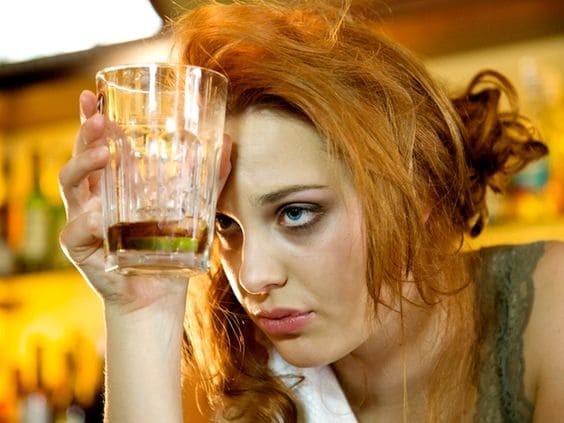
Also read: How Much Alcohol Is In Beer?
How Many Beers Does It Take to Get Drunk?
Generally, it takes about 3-4 beers for an average person to feel tipsy, and around 5-6 beers to reach the legal definition of intoxication. However, some people may feel the effects of alcohol after just one or two beers, while others may need more than six beers to become drunk.
The number of how many beers to get drunk varies depending on several factors, including the alcohol content and volume of the beer, your body weight and composition, your gender, your drinking experience, and how fast you drink.
How many Coors Light to Get drunk?
It’s difficult to give a definitive answer to how many beers to get drunk when drinking Coors Light because the number of beers it takes to get drunk can vary significantly depending on individual factors. However, on average, it would take around 4-5 Coors Light beers for most people to reach a state of intoxication. It’s important to remember that the best way to stay safe when drinking is to always drink responsibly and know your limits.
How many Michelob Ultras to get drunk?
After consuming three cans of Michelob Ultra, any person may begin to feel tipsy. For men, their blood alcohol concentration (BAC) will be around 0.032%, while for women, their BAC will be around 0.048%.
How many Bud Light Seltzers to get drunk?
Drinking 2 to 3 cans of Bud Light Seltzers can lead to a state of intoxication for both men and women weighing 100 pounds
How many Heineken 0.0 to get drunk?
How many non-alcoholic beers to get drunk is a common question for a lot of people. Heineken 0.0 is a non-alcoholic beer, which means it contains very little alcohol – usually less than 0.5% alcohol by volume. It’s very difficult, if not impossible, to get drunk from drinking non-alcoholic beer alone. However, it’s important to remember that if you’re trying to avoid alcohol altogether, non-alcoholic beer should still be consumed in moderation as they may still contain some alcohol.
How many Budweisers get you drunk?
Based on research, an average American male would typically reach a state of intoxication (BAC of 0.109 – 0.131) after consuming around 5 to 6 cans of Budweiser beer (5% ABV, 12oz/330ml), while a female would typically need around four cans to reach a similar BAC level (BAC of 0.115).
Can one beer get you drunk?
It’s possible for one beer to get you drunk, especially if you are a lightweight drinker, have a low tolerance for alcohol, or the beer has a high alcohol content. However, most people would not reach a state of intoxication from drinking one beer alone.
The best way to stay safe when drinking is to always drink responsibly and know your limits. It’s also important to avoid driving or engaging in other activities that require alertness or coordination after consuming alcohol, even if you’ve only had one drink.
Alcohol Content and Volume
The alcohol content and volume of a beer are the primary factors that affect how quickly you become drunk. Frankly speaking, beers with higher alcohol content will get you drunk more quickly than those with lower alcohol content.
But, the volume of the beer also plays a role in how quickly you become intoxicated. A standard 12-ounce (355-milliliter) beer with an ABV of 5% contains about 14 grams of pure alcohol, which is equivalent to one standard drink.
How Long Does Being Drunk Last?
How long you are drunk depends on many things, like how much and what kind of alcohol you drink, your metabolism, and how often you drink. Depending on how much alcohol was drunk and how quickly the body can process it, the effects of being drunk can last anywhere from a few hours to several hours.
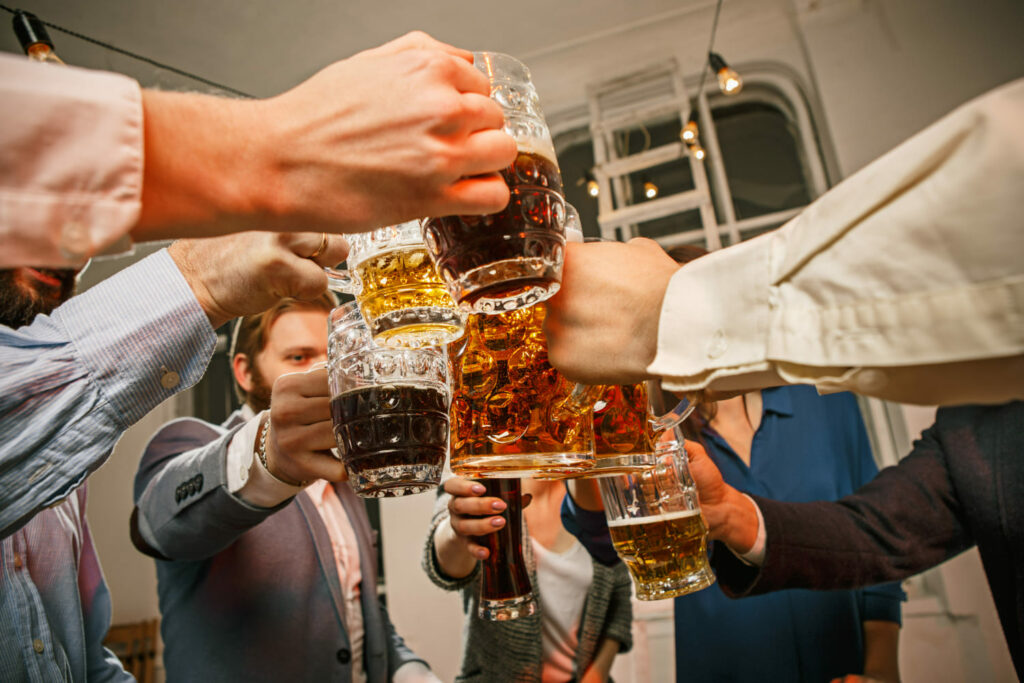
Risks of Drinking Alcohol Too Much
Alcohol consumption can pose several risks to your physical and mental health, including:
Short-term effects of alcohol
- Slurred speech and impaired coordination
- Reduced inhibitions and poor decision-making
- Memory loss and blackouts
- Nausea and vomiting
- Increased heart rate and blood pressure
- Difficulty breathing and increased risk of accidents and injuries
Long-term effects of alcohol
- Liver disease and cirrhosis
- Digestive problems and increased risk of certain cancers
- High blood pressure and increased risk of heart disease
- Brain damage and increased risk of dementia
- Depression and anxiety disorders
- Relationship and social problems
Alcohol dependency
Regular and excessive alcohol consumption can lead to alcohol dependency, also known as alcoholism. This is a chronic disease characterized by the inability to control alcohol consumption, despite the negative consequences it may cause. Alcoholism can have serious health and social consequences and requires professional help to overcome.
Tips for How Not To Get Drunk Fast
If you want to enjoy alcohol but not get drunk too quickly, here are some tips to help you pace yourself and drink responsibly:
- Choose beverages with lower alcohol content, such as light beers or wines with lower ABV.
- Alternate between alcoholic and non-alcoholic drinks to stay hydrated and reduce alcohol consumption.
- Eat a meal before drinking to slow the absorption of alcohol into your bloodstream.
- Sip your drink slowly and enjoy it over time, rather than drinking it quickly.
- Avoid drinking on an empty stomach, as this can cause alcohol to be absorbed more quickly.
- Set a limit for yourself and stick to it, and avoid drinking when you are feeling upset or stressed.
- Know your limits and stop drinking if you feel yourself becoming intoxicated.
- Plan ahead for a safe way to get home, such as calling a taxi or using a designated driver.
Remember, the best way to avoid getting drunk too quickly is to drink responsibly and know your limits. Drinking too much can have serious health and social consequences, so it’s important to enjoy alcohol in moderation.
Myths and Misconceptions
Myths and Misconceptions about Alcohol Consumption
There are several myths and misconceptions surrounding alcohol consumption, and it’s important to separate fact from fiction to make informed decisions about drinking. Here are some common myths and the truth behind them:
- Coffee and other remedies can sober you up: This is a common misconception, but the truth is that only time can sober you up. Coffee and other remedies may make you feel more alert, but they do not reduce the amount of alcohol in your bloodstream.
- Beer before liquor, never sicker: The order in which you consume different types of alcoholic drinks does not affect how drunk you will get. What matters is the amount of alcohol you consume, regardless of the type of drink.
- Drinking water can sober you up: Drinking water can help you stay hydrated and reduce the symptoms of dehydration, but it does not reduce the amount of alcohol in your bloodstream or sober you up.
Remember that the only way to avoid the negative effects of alcohol consumption is to drink responsibly and know your limits. If you do choose to drink, be aware of the potential risks and take steps to minimize them, such as staying hydrated, avoiding drinking games, and having a designated driver.
FAQs
Can you become immune to alcohol?
No, you cannot become immune to alcohol. However, regular and heavy alcohol consumption can lead to a higher tolerance for alcohol, which means that it may take more alcohol to achieve the same effects over time.
Can you sober up quickly after drinking too much?
No, it takes time for the body to process alcohol, and there is no way to sober up quickly. Drinking water, eating food, or taking a cold shower may help you feel better, but they will not reduce the amount of alcohol in your bloodstream.
Can you drink beer and still lose weight?
Drinking beer in moderation as part of a balanced diet and exercise program may not hinder weight loss efforts, but beer contains calories and can contribute to weight gain if consumed in excess. It’s important to drink responsibly and within moderation to maintain a healthy lifestyle.
What should I do if I suspect someone is suffering from alcohol poisoning?
If you suspect someone has alcohol poisoning, seek medical attention immediately. Symptoms include confusion, vomiting, seizures, slow or irregular breathing, and unconsciousness.
How many beers to get drunk 250 pounds?
It’s difficult to give a definitive answer to how many beers it would take for a person weighing 250 pounds to get drunk because the number of beers it takes to get drunk can vary significantly depending on individual factors. However, on average, it would take around 6-8 beers for a person weighing 250 pounds to reach a state of intoxication.
How many beers to get drunk 180 pounds?
It would take around 4-5 beers for a person weighing 180 pounds to reach a state of intoxication.
Conclusions
In conclusion, the question of how many beers to get drunk does not have a straightforward answer. The number of beers it takes to get drunk can vary significantly depending on individual factors such as body weight, gender, drinking experience, metabolism, and the alcohol content of the beer. It’s necessary to remember that excessive alcohol consumption can have serious short-term and long-term health consequences, and can lead to alcohol dependency and other social and personal problems. Ultimately, the key to enjoying alcohol safely is moderation and awareness of the potential risks involved.
Keep reading: How Many Beers Is .08?
I’m Chen Mina, from Vol de Nuit, who has a special passion for bartending, especially mixing wine, beer, and cooktail. Here you will find content about alcoholic beverages, I will bring you knowledge that few people know about this drink.

